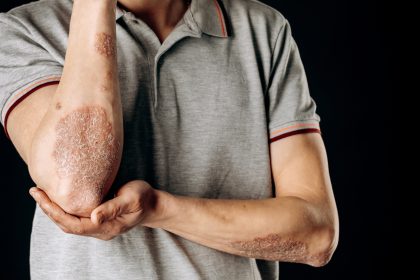Skin cancer is often underestimated because it may not always present itself as dramatically as other forms of cancer. Yet, the reality is stark: skin cancer is one of the most common types of cancer worldwide, and its prevalence is on the rise. Understanding the critical signs of skin cancer is not just about early detection—it’s about saving lives. This article delves into the key symptoms you should be vigilant about, emphasizing the importance of early recognition and proactive health care.
Skin cancer doesn’t discriminate; it can affect anyone, regardless of age, gender, or skin tone. The subtle nature of its early signs often leads to delayed diagnoses, which can be fatal. Therefore, knowing what to look for is crucial. This article will explore the telltale signs of skin cancer that you should never ignore, how to differentiate between benign and malignant growths, and why regular skin checks are essential for everyone.
Unusual moles: The ABCDEs of skin cancer
One of the most common indicators of skin cancer is an unusual mole. However, not every mole is a cause for alarm. Understanding the difference between a typical mole and one that may be cancerous is vital. Dermatologists recommend following the ABCDE rule when examining moles on your body:
- Asymmetry: The two halves should match if you draw a line through the middle of a mole. This asymmetry could be a sign of skin cancer if they don’t.
- Border: A benign mole has smooth, even borders. If the edges are ragged, notched, or blurred, it may be time to consult a dermatologist.
- Color: Most benign moles are a single shade of brown. Moles that display multiple colors, such as black, brown, tan, red, white, or blue, should be examined.
- Diameter: While not all large moles are cancerous, any mole larger than a pencil eraser (about 6mm) should be checked, especially if it’s growing.
- Evolving: Any change in size, shape, color, or elevation, or new symptoms such as bleeding, itching, or crusting, could be a warning sign of skin cancer.
These signs are often the first visible indicators of potential skin cancer. Ignoring these warning signs can lead to serious health consequences even if a mole seems small or insignificant. A simple, routine skin check can make the difference between early treatment and a more severe prognosis.
New growths or sores that don’t heal: A persistent problem
Another critical sign of skin cancer is the presence of new growths or sores that don’t heal. Skin cancer can manifest as a new bump, nodule, or a sore that either doesn’t heal or heals and then reappears. These growths are often mistaken for harmless skin irritations or minor injuries, but their persistence is a red flag.
Basal cell carcinoma, the most common type of skin cancer, often presents as a small, shiny bump on the skin, particularly in areas exposed to the sun. These bumps may appear pearly white, pink, or red and can be mistaken for pimples. However, unlike pimples, they do not heal and may bleed, ooze, or develop a crust.
Another common form of skin cancer, squamous cell carcinoma, often appears as a rough, scaly patch or a wart-like growth. It can also manifest as an open sore that doesn’t heal or returns after healing. This type of cancer can be more aggressive than basal cell carcinoma, making early detection crucial.
Ignoring these symptoms because they seem minor can be dangerous. If you notice a sore that doesn’t heal or a new growth that looks unusual, it’s essential to have it examined by a healthcare professional as soon as possible.
Itchy, painful, or bleeding lesions: Don’t dismiss discomfort
While skin cancer is often painless in its early stages, certain symptoms can cause discomfort. If you experience itching, tenderness, or pain in a mole or lesion, it could be a sign of something more serious.
Melanoma, the deadliest form of skin cancer, can sometimes cause a mole or lesion to itch or become painful. Although not all melanomas are uncomfortable, the presence of these symptoms warrants immediate attention. Similarly, any mole or growth that begins to bleed without any clear cause should be evaluated by a doctor.
These symptoms can be particularly deceptive because they may appear minor or intermittent. For instance, a lesion might only itch occasionally, or a mole might bleed slightly after being rubbed. However, these signs can indicate that the cancer is growing and potentially spreading to other parts of the body.
The importance of regular skin checks: Your first line of defense
Routine skin checks are one of the most effective ways to catch skin cancer early. This involves regularly examining your skin for any changes and seeing a dermatologist for a professional evaluation, especially if you notice any of the signs mentioned above.
Performing self-examinations can be done monthly, taking the time to look at all areas of your skin, including less visible places like the scalp, the soles of your feet, and between your toes. Early detection through self-exams and professional check-ups can significantly increase the chances of successful treatment.
For those with a higher risk of skin cancer, such as individuals with a history of sunburns, fair skin, a family history of skin cancer, or numerous moles, regular dermatologist visits are crucial. A professional can help identify suspicious spots that might be overlooked during a self-exam.
Conclusion: Take action to protect your health
Skin cancer is a serious health issue that requires vigilance and proactive care. By being aware of the critical signs of skin cancer—unusual moles, new growths or sores that don’t heal, and itchy, painful, or bleeding lesions—you can take the necessary steps to catch this disease early.
Don’t wait for symptoms to worsen before seeking medical advice. Early detection is key to successful treatment, and it could save your life. Regular skin checks, both self-examinations and professional evaluations, are your best defense against this silent but deadly threat.
Your health is your most valuable asset—protect it by staying informed and vigilant about the signs of skin cancer. By doing so, you can ensure that any potential issues are addressed promptly, giving you the best chance at maintaining your health and well-being.
This story was created using AI technology.
















